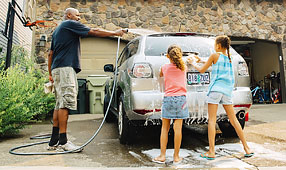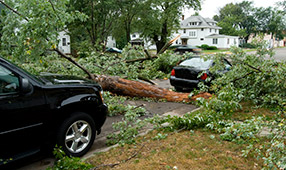Increasing car insurance rates, high deductibles, bad customer service or a policy that’s expiring soon are all good reasons to compare car insurance quotes from different companies to see if you can get a better deal. You may find the best car insurance for you is available from another provider.
Switching car insurance companies is easier than people think. When you’re ready to shop around for quotes, you can speed up the process by having the information you’ll need, understanding car insurance terminology, and deciding how much car insurance you need for your unique lifestyle.
How to start shopping for car insurance
The first step is to compare car insurance quotes from different companies. This will help you determine the type of coverage and rates you need, and will help you be better informed if you decide to switch to a new provider.
Before you start calling to get car insurance quotes, you’ll need to gather some information to make the quoting process go smoothly.
To receive an accurate auto insurance quote, you’ll need to provide:
- Names and dates of birth for all drivers
- Everyone’s driver’s license numbers
- Your address
- Make and model of any vehicles and their 16-digit vehicle ID number (VIN)
- Annual miles driven and the current odometer reading for each vehicle
You will also need your current auto insurance policy declaration page (aka the “dec page”) to make a true apples-to-apples comparison. The dec page details the costs for the coverage you currently have.
It’s important that you determine whether the quoted policy is for six months or a year. A six-month auto policy will appear to be less expensive than a quote for a 12-month policy, but that is often not the case. A 12-month policy also ensures that your rate won’t change for a full year.
How to get car insurance quotes
Start with a list of car insurance companies you want to contact for quotes. You can request a quote online or by phone.
How to compare car insurance quotes
The main elements you’ll want to compare are price, deductibles and levels of liability coverage.
Price: The car insurance quotes you receive are based on several factors:
- Your driving record and those of others in your household
- Your age and marital status
- The type of vehicle you drive and its loss history (any previously filed insurance claims)
- Where you live and whether the vehicle is garaged
- The annual mileage driven
- Your credit history (except in California, Hawaii and Massachusetts)
Most auto insurers offer discounts for bundling auto and home/renters insurance, insuring multiple vehicles, safety and anti-theft devices, good student GPAs, safe-driver courses and membership in an organization or employer group (such as NEA).
Cost shouldn’t be the only factor in your auto insurance decision. Companies offering the cheapest car insurance may not be the best value. Be sure to research reviews, compare pricing and weigh the coverage and overall benefits.
Deductibles: This is the amount you pay before your car insurance payments kick in if something happens to your vehicle. Usually, the higher the deductible, the lower your premium will be.
The typical car insurance deductible is $250, $500 or $1,000. If you have a $2,500 claim, and you had chosen the $500 deductible, then you would pay $500, and your insurance company would pay the remaining $2,000.
If you choose a higher deductible, make sure that you put aside a little money so you’ll be able to cover your deductible.
Liability coverage: This is protection in case you cause a crash that hurts others or damages their vehicle or property. The following are mandatory in most states:
- Bodily Injury. Pays medical bills, loss of income and other expenses for people injured in a crash you caused.
- Property Damage Liability. Pays for damage to other people’s property in a crash you caused.
- Uninsured/Under-insured Motorist Coverage. Pays for damage and your injuries when someone without insurance or with minimal insurance hits you. This is required in some states, but not in others.
These auto insurance coverages are optional in most states:
- Comprehensive Coverage. Pays for damage (minus the deductible) to your car caused by weather, animals, fire, theft, vandalism or falling objects.
- Collision Coverage. Pays for damage to your vehicle (minus the deductible) if you hit another vehicle or object.
- Personal Injury Protection/Medical Pay. Pays for medical bills and other costs for you and any passengers after a crash.
- Rental Car Reimbursement. Pays for the cost of a rental car while your vehicle is repaired or replaced as the result of a claim.
- Gap Insurance. Pays the difference between what your vehicle is worth after depreciation versus the remaining balance of your loan if it’s totaled.
The Insurance Information Institute recommends that everyone purchase as much liability car insurance as they can afford. The recommended minimums are:
- $100,000 bodily injury liability per person
- $300,000 bodily injury liability per accident
- $50,000 property damage liability per accident
That means if the insured driver is at fault in a crash, their insurance would pay $100,000 to each person in the other vehicle(s) for injuries—up to $300,000 per accident—and pay up to $50,000 for the damage caused to the other vehicle(s), public property, etc.
Most states only require drivers to have a minimum amount of liability coverage. Although it might satisfy the legal requirement, it could leave you severely underinsured, putting your assets (home, savings, future earnings) at risk if you cause a serious accident.
If you have a lot of assets (a home, investments, vacation property) and higher earning potential, you should consider buying even more liability insurance to protect them.
How to switch car insurance companies
You don’t have to wait until your policy is up for renewal to cancel your auto insurance. You can make the switch as soon as you decide to go with another insurance company—often with help from your new agent.
In most cases, any unused portion of your payment will be refunded to you. Most companies don’t charge a cancellation fee, but some do. You also will need to notify your bank to cancel or change automatic payments.
It’s extremely important that you do NOT cancel your car insurance before your new insurance policy begins. Any gap in auto insurance coverage can be very costly.
Save with your NEA membership benefits
As an NEA member, you have access to the NEA Auto & Home Insurance Program. which offers customized coverage options and packages to help you get the insurance you need.












